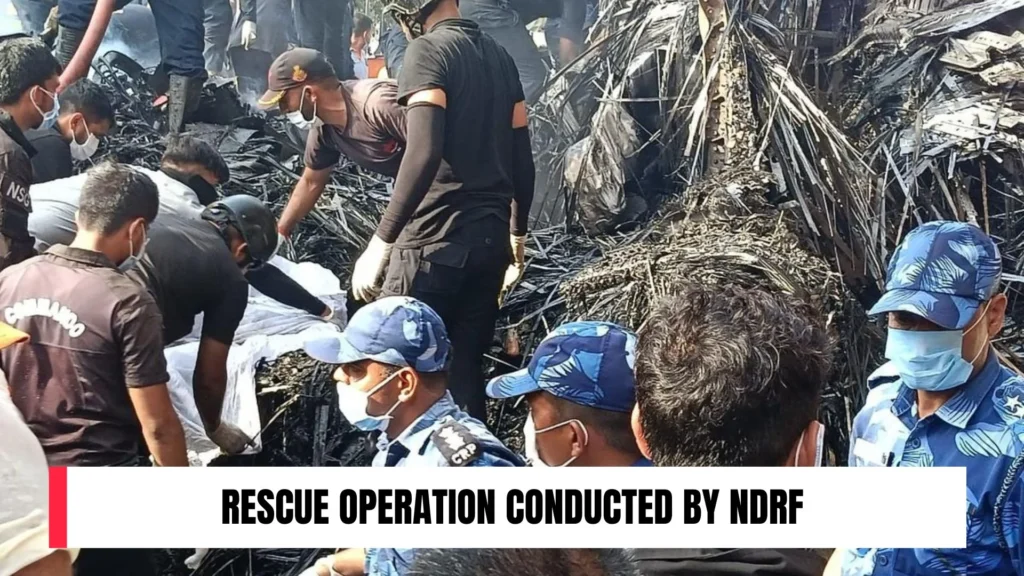Tragedy Strikes: Air India Flight AI171 Crashes Moments After Takeoff
In a heart-wrenching turn of events, an Air India flight bound for London crashed into a residential area near Ahmedabad’s Sardar Vallabhbhai Patel International Airport on Thursday, June 12, 2025, at 5:31 PM IST. Shortly after takeoff, the Boeing 787-8 Dreamliner, carrying 242 passengers and crew, crashed to the ground, creating a path of destruction and igniting a huge rescue effort. As the world grapples with the scale of this disaster, questions about what went wrong and how such a tragedy could occur are mounting.
The crash site, located in Meghani Nagar, is now a scene of chaos, with emergency services working tirelessly to save lives and piece together the events leading up to the disaster. Thick black smoke billows from the wreckage, and the community is in shock as the full extent of the casualties becomes clear. This incident marks one of the darkest days in Indian aviation history, drawing parallels to past tragedies and raising concerns about air travel safety.
Flight Details: Who Was on Board?
Flying from Ahmedabad to London Gatwick, Flight AI171 was a standard flight operated by Air India’s Boeing 787-8 Dreamliner. The flight took off at 1:38 p.m. IST, piloted by Captain Sumit Sabharwal, an experienced aviator with over 8,200 hours of flying time, and co-pilot Clive Kunder, who had 1,100 hours of experience. On board were 230 passengers and 12 crew members, representing multiple nationalities:
| Nationality | Number of Passengers |
| Indian | 169 |
| British | 53 |
| Portuguese | 7 |
| Canadian | 1 |
Former Gujarat Chief Minister Vijay Rupani was one of the passengers, and his presence on the aircraft has given the tragedy additional political weight. As families wait anxiously for news, the diversity of the passenger list underscores the global impact of this disaster.

The Crash: A Timeline of Terror
The sequence of events unfolded with terrifying speed. At 1:38 p.m., Flight AI171 took off from Runway 23 at Ahmedabad airport. Just moments later, the plane issued a MAYDAY call to air traffic control (ATC), indicating an emergency. However, no further communication was received from the aircraft, and it disappeared from radar screens at an altitude of 625 feet, less than a minute after takeoff. Witnesses on the ground reported seeing the plane struggle to gain altitude before it crashed into the BJ Medical College UG hostel mess in Meghani Nagar.
The impact was catastrophic. The plane, carrying 242 souls, slammed into a building housing students and staff, causing extensive damage. Images shared by the Federation of All India Medical Associations (FAIMA) show the wreckage embedded in the hostel, with parts of the building collapsed. Miles of thick black smoke were visible as flames swiftly spread from the disaster site.

Rescue and Relief: A Race Against Time
In the aftermath of the Air India plane crash, emergency services sprang into action. Gujarat Chief Minister Bhupendra Patel has instructed officials to prioritize rescue and relief operations, ensuring that the injured receive immediate medical attention. A green corridor has been established to facilitate the swift transport of casualties to hospitals, and all roads leading to the crash site have been cleared for ambulances.
The Ahmedabad police have confirmed that the plane crashed into a doctors’ hostel, and preliminary reports indicate that students and staff were present at the time. The state medical association has reported injuries among medical college personnel, though the full extent of the casualties remains unclear. As of now, the focus is on saving lives and providing support to those affected.
| Emergency Contact Information | Details |
| Operational Control Room | 011-24610843, 9650391859 |
| Dedicated Hotline Number | 1800 5691 444 |
Impact on Ahmedabad Airport: Operations Halted
The Air India plane crash has had a ripple effect on Ahmedabad’s aviation infrastructure. All flight operations at Sardar Vallabhbhai Patel International Airport have been temporarily suspended, disrupting travel for thousands. An IndiGo flight from Kolkata to Ahmedabad was forced to return to its origin after learning of the closure, highlighting the widespread impact of the incident.
An Operational Control Room has been established by Air India to manage information and offer updates. The airline has promised to share further updates on its website (Air India) and its X handle. The suspension of airport operations has left travelers stranded, and authorities are working to restore normalcy as soon as possible.
International Response: Support for British Nationals
The Air India plane crash has drawn international attention, particularly from the United Kingdom, where 53 British nationals were on board. UK Foreign Secretary David Lammy addressed the House of Commons, confirming that the Foreign, Commonwealth & Development Office (FCDO) is working urgently with local authorities to support British nationals and their families. A crisis team has been activated in both Delhi and London to provide assistance.
Prime Minister Narendra Modi has expressed his condolences, describing the incident as “heartbreaking beyond words.” He has assured that all necessary support is being provided to those affected and has praised the efforts of emergency services. The National Disaster Response Force (NDRF) and the federal government have also promised their full cooperation, according to Union Home Minister Amit Shah.

Historical Context: India’s Aviation Disasters
This incident serves as a sobering reminder of India’s aviation accident history. The deadliest aircraft disaster in Indian history is still the 1996 Charkhi Dadri mid-air crash, which took 349 lives. Other notable incidents include the 2010 Air India Express crash in Mangalore, which killed 158 people, and the 2018 Nepal plane crash involving an Air India flight.
While aviation safety has improved significantly in recent years, this incident raises questions about the robustness of current systems and the need for continued vigilance. Given that the Boeing 787-8 Dreamliner is among the most sophisticated airplanes now in use, experts say this tragedy is all the more puzzling.
| Major Indian Aviation Disasters | Year | Fatalities |
| Charkhi Dadri Collision | 1996 | 349 |
| Air India Express Mangalore | 2010 | 158 |
| Air India Ahmedabad Crash | 2025 | TBD |
Investigation: Unraveling the Cause
An immediate inquiry into the Air India plane crash has been initiated by the Directorate General of Civil Aviation (DGCA). Initial reports indicate that the plane issued a MAYDAY call but did not respond to further communications from ATC. The aircraft fell outside the airport perimeter shortly after departure from Runway 23, with no apparent warning.
Aviation experts suggest that factors such as technical malfunctions, pilot error, or adverse weather conditions could be potential causes. However, it will take time for investigators to piece together the sequence of events and determine the root cause. The global aviation community is watching closely, as lessons from this tragedy could have far-reaching implications for air travel safety.
Voices from the Ground: Eyewitness Accounts
Eyewitnesses in Meghani Nagar described scenes of horror as the plane crashed into the medical college hostel. “It was like an earthquake,” said a local resident. “We saw flames and smoke everywhere, and people were running in panic.” Another witness, a student at the medical college, recounted hearing a loud explosion before seeing the wreckage.
These accounts paint a vivid picture of the chaos that ensued, underscoring the urgency of the rescue efforts. The community has rallied to support emergency services, with local hospitals preparing to receive a large number of casualties.
The Human Toll: A Community in Mourning
The Air India plane crash has left a profound impact on the Ahmedabad community and beyond. Families are anxiously awaiting news of their loved ones, and the presence of former Chief Minister Vijay Rupani on board has heightened public concern. The crash into a medical college hostel has also raised fears for the safety of students and staff, many of whom were present at the time.
As the nation mourns, stories of loss and resilience are beginning to emerge. Social media platforms, including X, are filled with messages of condolence and calls for support. The tragedy has united people across borders, with global leaders expressing solidarity with India during this difficult time.
What Happens Next?
As rescue operations continue, the focus will shift to supporting survivors and families while investigating the cause of the crash. Air India and government authorities are expected to release regular updates, and the international community will play a key role in providing assistance. The suspension of airport operations will likely cause ongoing disruptions, and travelers are advised to check with their airlines for updates.
This incident will also prompt a broader conversation about aviation safety in India and globally. With the Boeing 787-8 Dreamliner involved, manufacturers and regulators may face scrutiny as investigators work to uncover the truth.
Conclusion: A Nation Mourns
As the dust settles at the crash site, the world is left to grapple with the enormity of this loss. With 242 lives hanging in the balance, the human toll of this disaster is immeasurable. Families are waiting for news of their loved ones, and communities are coming together to support those affected.
This Air India plane crash is a somber reminder of the fragility of life and the importance of aviation safety. As investigations continue and more details emerge, one thing is clear: the road to recovery will be long and painful. In the face of unspeakable tragedy, our sympathies are with the victims, their families, and the first responders who are working nonstop.


